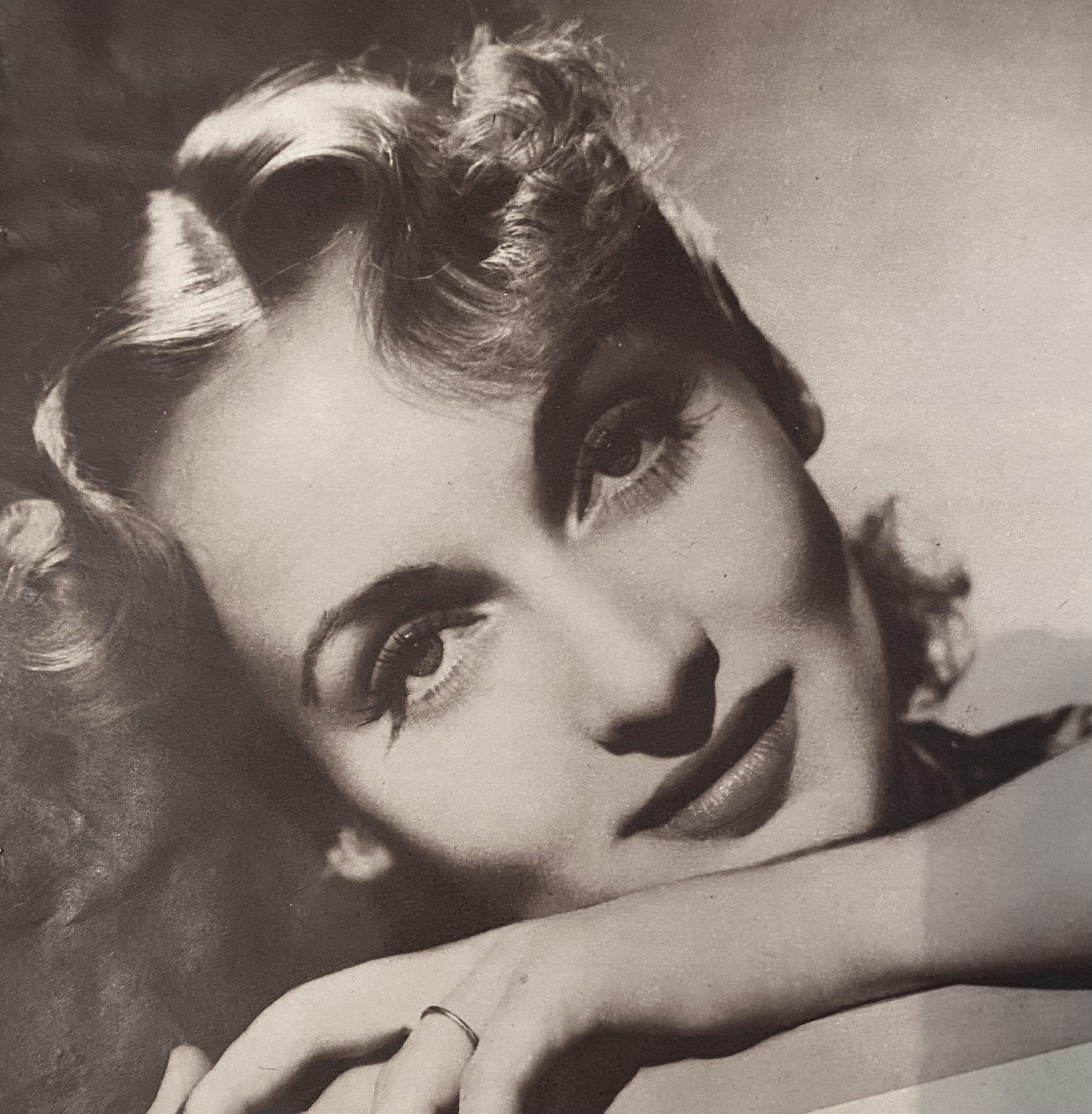
Remembering Carole Lombard, 80 Years Later
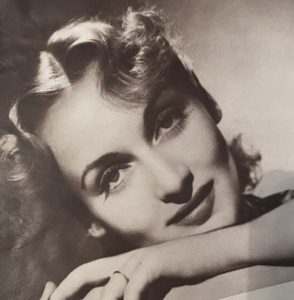
Carole Lombard died 80 years ago today when her plane crashed into Mount Potosi outside Las Vegas, Nevada. She was only 33 years old.
The glamorous Lombard was born Jane Alice Peters in Fort Wayne, Indiana, on October 6, 1908, the only daughter of Elizabeth “Bessie” Peters and her husband Frederic. She had two older brothers. When her parents separated in 1914, Bessie moved the children to Los Angeles.
Blonde, blue-eyed Jane made her first screen appearance at only twelve–a small part in “A Perfect Crime,” 1921. By the age of sixteen, she had signed with Fox, although only appeared in small bit parts. She adopted the more glamorous moniker “Carole Lombard” (although at first spelled without the “e.”)
In 1927, Carole was involved in an automobile accident in which the windshield shattered and badly cut her face. She underwent reconstructive surgery but was sure her days on the screen were over. Surprisingly, that was not at all the case. After the accident, Carole went on to feature in 18 short films for Mack Sennett, as one of his “bathing beauties.”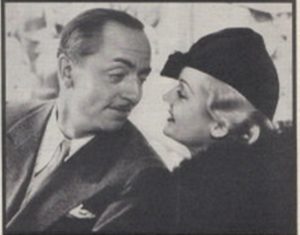
Carole’s star began to rise when she was signed by Paramount in 1930. She began to be noticed in films such as “Fast and Loose,” “It Pays to Advertise,” “Man of the World” and “Ladies Man.” Her leading man in the latter two films was William “Bill” Powell. Despite their apparent different personalities–she was fun-loving, carefree and loud, he was subdued, sophisticated and introverted–the pair married on June 6, 1931. She was 22, he was 38.
One of Carole’s features in 1932 was No Man of Her Own. She replaced Miriam Hopkins in the romantic film opposite a rising star borrowed from MGM–Clark Gable. At the time though, no on-set sparks were reported.
Their differences too great, Carole and Bill divorced in August 1933. Carole went on to date screenwriter Robert Riskin and had an ill-fated romance with singer Russ Colombo, who died in a shooting accident in 1934.
Carole was thrown into many different roles: dancing with George Raft in “Bolero,” melodrama with Charles Laughton in “White Woman,” musical comedy with Bing Crosby in “We’re Not Dressing.” Her real breakout performance was in 1934’s “Twentieth Century,” opposite John Barrymore and directed by Howard Hawks. Her lightning-fast comedic timing in the role of up and coming actress Mildred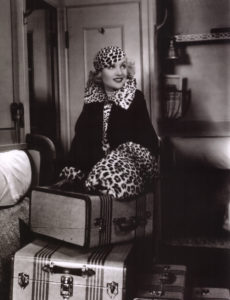 cemented her as a comedy star. After a few more mediocre roles–“Lady By Choice,” “Now and Forever,” “Rumba”—Carole’s comedy career took off in “Hands Across the Table” and “The Princess Comes Across.” She was nominated for an Academy Award for her portrayal of ditzy Irene in the classic “My Man Godfrey”–as was her co-star, ex-husband William Powell.
cemented her as a comedy star. After a few more mediocre roles–“Lady By Choice,” “Now and Forever,” “Rumba”—Carole’s comedy career took off in “Hands Across the Table” and “The Princess Comes Across.” She was nominated for an Academy Award for her portrayal of ditzy Irene in the classic “My Man Godfrey”–as was her co-star, ex-husband William Powell.
On February 7,1936, Clark Gable and Carole Lombard separately attended a party at Jock Whitney’s house, to celebrate screenwriter Donald Ogden Stewart’s wife’s recent release from a sanitarium, jokingly called “The Nervous Breakdown Party”. Things did not start out well as Carole, as a joke, arrived in an ambulance. Attendants carried her on a stretcher and placed it in the middle of the room. Everyone gasped and gathered around. She jumped up, howling with laughter. Clark, there with Merle Oberon, was not amused and found the joke in poor taste. Clark and Carole got into a fight that ended with her stomping away from him, furiously proclaiming that he was a stuff shirt. Near the end of the party, Carole challenged Clark to a game of tennis. There they played, both in evening clothes, playing tennis until it was too dark to see (Carole beat him 8-0). Merle, irritated by being ignored, had someone else take her home and Clark didn’t even notice.
A couple months later, at the annual Mayfair Ball, Clark and Carole shared a dance. Holding her close, Clark realized she wasn’t wearing any undergarments. Taking this as a green light, he suggested they leave the party and go back to his hotel together. Carole laughed and said, “Who do you think you are, Clark Gable?” This angered him and he left the party. The next morning he awoke to the sounds of birds cooing in his bedroom. Carole had convinced a hotel worker to put them in there while he slept. Tied to one of the birds was a note that said, “How about it? Carole” From that point on, they became inseparable. For the next three years, they were one of Hollywood’s most glamorous couples. They attended the Academy Awards together, premieres and were the number one topic of the press. Carole grew anxious for marriage. She wanted the title and she wanted children. Biding her time waiting for Clark’s wife Ria to get a divorce, Carole went house shopping. She and Clark jumped at the chance to own director Raoul Walsh’s twenty acre ranch in Encino. It was everything they had wanted. Carole wrote a check for $50,000 and the house was theirs. Renovations began and the couple waited until the day they could occupy the house as husband and wife.
Clark realized she wasn’t wearing any undergarments. Taking this as a green light, he suggested they leave the party and go back to his hotel together. Carole laughed and said, “Who do you think you are, Clark Gable?” This angered him and he left the party. The next morning he awoke to the sounds of birds cooing in his bedroom. Carole had convinced a hotel worker to put them in there while he slept. Tied to one of the birds was a note that said, “How about it? Carole” From that point on, they became inseparable. For the next three years, they were one of Hollywood’s most glamorous couples. They attended the Academy Awards together, premieres and were the number one topic of the press. Carole grew anxious for marriage. She wanted the title and she wanted children. Biding her time waiting for Clark’s wife Ria to get a divorce, Carole went house shopping. She and Clark jumped at the chance to own director Raoul Walsh’s twenty acre ranch in Encino. It was everything they had wanted. Carole wrote a check for $50,000 and the house was theirs. Renovations began and the couple waited until the day they could occupy the house as husband and wife.
The day came sooner than expected, as Ria was granted a divorce on March 8,1939 in Las Vegas. Clark promised Carole that the first day he had off from filming Gone with the Wind, they would be married. The press was waiting for the wedding, camping outside their homes day and night.
Clark’s pal and MGM publicist Otto Winkler suggested Kingman, Arizona, a small town about four hundred miles away, where he had just been married. March 29 was the perfect date, as most of the press would be in San Francisco for a press junket for the new film “The Story of Alexander Graham Bell.” Clark, Carole and Otto headed out to Kingman at dawn. When they arrived in late afternoon, they went straight to the courthouse for their license, then to the church for the ceremony.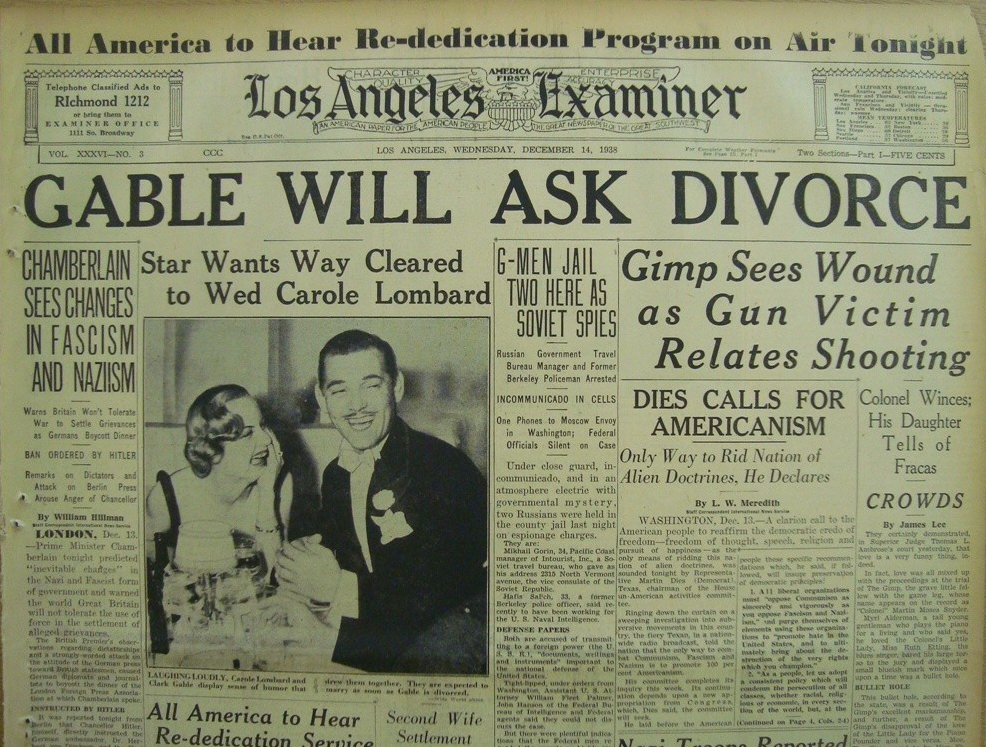
Despite claims that their wedding night was spent in Oatman, Arizona, the newlyweds drove home immediately afterward, arriving in Los Angeles at 3:00am. After a few hours sleep, the publicity department at MGM had arranged for them to have a “meet and greet” with the press on the front lawn. Clark answered most of the questions, usually with “No comment” as they got too personal. Carole giggled nervously. No matter which paper you read that covered the event, they all had the same conclusion: These two were smitten!
Called the “romance of the century” and “the greatest couple ever paired” by gushing fan magazine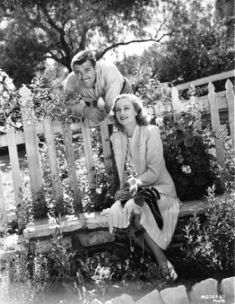 columnists, the Gables (calling each other “Ma” and “Pa”) settled quickly into a life that revolved around their ranch. Shunning most Hollywood invitations, they preferred to spend their evenings at home with only their closest friends. Glamorous Carole was now at her happiest trudging along with Clark in the mud, toting guns and heavy equipment on hunting trips. She became quite an excellent shot and bragged that she became even better than Clark! Although women were not usually welcome on these hunting and fishing excursions, Carole soon proved herself to be one of the guys.
columnists, the Gables (calling each other “Ma” and “Pa”) settled quickly into a life that revolved around their ranch. Shunning most Hollywood invitations, they preferred to spend their evenings at home with only their closest friends. Glamorous Carole was now at her happiest trudging along with Clark in the mud, toting guns and heavy equipment on hunting trips. She became quite an excellent shot and bragged that she became even better than Clark! Although women were not usually welcome on these hunting and fishing excursions, Carole soon proved herself to be one of the guys.
They both took pride in the ranch. Carole decorated the interior and remodeled the rooms just to satisfy Clark’s taste. Carole did have an exquisitely girly bedroom and bathroom to herself, which in usual Carole fashion she referred to as “the fanciest shithouse in the country!” They had horses, chickens, dogs and cats, all lovingly cared for. Carole bought Clark a tractor and he was always harvesting and gardening when his schedule permitted it. They did all the work themselves, having only one caretaker and a personal secretary, Jean Garceau, to help with administrative duties. One afternoon when they were sitting on the patio watching the sun go down, Clark became emotional and said, “Ma, we’re lucky people. We’ve got this ranch, and while it’s not going to support us, it feels like a ranch, it smells and looks like a ranch. It’s not just animals and hay. We’ve got the house fixed just to suit us, we’ve both got good jobs, friends, money in the bank and our health. God’s been good to us. Can you think of anything you really want that you haven’t got?” Carole thought for a minute before answering. “Pa, to tell you the truth, I could use a couple of loads of horse shit if we’re going to do any good with those fruit trees.”
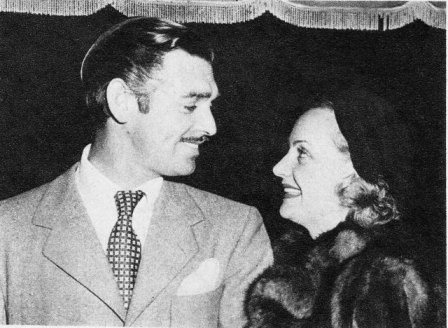 The two were fond of gags and were often trying to one-up each other. Carole knew that Clark was sensitive about the box office failure of his film Parnell. She had Parnell posters plastered all over MGM so he would come face to face with them wherever he went. To get her back, for a one year anniversary present, he gave her a custom made gown designed by Adrian, with newspaper headlines plastered all over it: “Parsons Pans Lombard!” “Lombard Flops Again!” “Lombard Limited–And How!” “Critics Cauterize Carole!” Carole, head held high, defiantly wore the gown to the next formal party they attended, despite Clark’s protests.
The two were fond of gags and were often trying to one-up each other. Carole knew that Clark was sensitive about the box office failure of his film Parnell. She had Parnell posters plastered all over MGM so he would come face to face with them wherever he went. To get her back, for a one year anniversary present, he gave her a custom made gown designed by Adrian, with newspaper headlines plastered all over it: “Parsons Pans Lombard!” “Lombard Flops Again!” “Lombard Limited–And How!” “Critics Cauterize Carole!” Carole, head held high, defiantly wore the gown to the next formal party they attended, despite Clark’s protests.
During filming on Idiot’s Delight, Carole worked at helping Clark feel relaxed and confident about his dancing. She sent him a full ballet outfit, including some over-sized dancing slippers, and when the dance sequences were finally shot, she had a huge bouquet of flowers delivered to him, prima ballerina-style.
While Clark was having grand success on the heels of Gone with the Wind, Carole switched gears and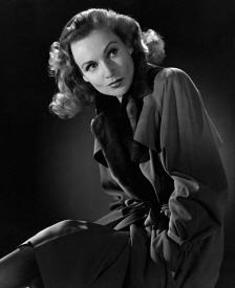 tried her hand at dramas, none very successful. She gradually slowed down on making movies and concentrated on trying to get pregnant. After two years of trying, she was very frustrated. She always got what she set out to achieve and the fact that motherhood alluded her was disturbing. The pair even visited John Hopkins Hospital in Washington DC to test their fertility. Friends say it was beginning to crack the Gables’ marriage.
tried her hand at dramas, none very successful. She gradually slowed down on making movies and concentrated on trying to get pregnant. After two years of trying, she was very frustrated. She always got what she set out to achieve and the fact that motherhood alluded her was disturbing. The pair even visited John Hopkins Hospital in Washington DC to test their fertility. Friends say it was beginning to crack the Gables’ marriage.
When the Japanese attacked Pearl Harbor in December 1941, both Clark and Carole felt they must do something for their country. At Carole’s urging, Clark was elected President of the Hollywood Victory Committee. One of his first duties was to set up war bond rallies. He didn’t like the idea of traveling to his hometown in Ohio (he despised crowds) but Carole jumped at the chance to visit Indianapolis. Clark had to report to the set to film Somewhere I’ll Find You, so he couldn’t go with her. In his place he sent his friend and MGM publicity man, Otto Winkler and Carole’s mother Bessie volunteered to join them.
Jean Garceau recalled that Carole looked particularly sad when she was leaving the ranch. She gave Jean a big hug and said, “Take care of Pa for me.” and gave her several little notes, one for each day she would be gone, to give Clark. Clark was absent when the three boarded the train at Union Station on January 12, 1942, some say because of an argument they had had the previous evening when she had warned him of cheating on her while she was gone. Carole arrived in Indianapolis on January 15 and regaled the crowd with a patriotic speech. She stationed herself in the statehouse, signing autographs and chatting with anyone who bought war bonds. One asked, “Where’s Clark?” She quipped, “At home. One of us has to work!” The Treasury Department had given her a quota of $500,000 of war bonds to sell. At the end of the day she had sold $2,017,513.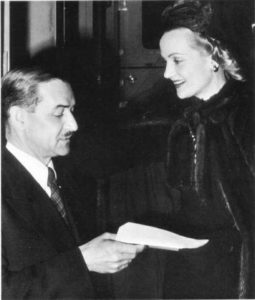
The trio was supposed to leave by train on the morning of January 16, make two more stops in Kansas City and Albuquerque, and arrive in Los Angeles on January 21. Carole suddenly decided that she couldn’t continue the tour and that she wanted to get home as soon as possible. Her mother had never flown before and was terrified. An avid believer in numerology, she was especially frightened after realizing that the flight was TWA #3, the plane was a DC-3, they were traveling in a party of three and that Carole was 33 years old. Three was very unlucky. Carole laughed off her mother’s protests and agreed to a coin toss. Carole won and they boarded the flight that very evening. At a fuel stop in Albuquerque, the pilot asked Carole, Bessie and Otto if they would mind relinquishing their seats to three servicemen and catch a flight the next day. Uncharacteristically, Carole refused; she was too anxious to get home. They were due to arrive in Los Angeles at 8:45am.
Clark had missed Carole terribly and made sure the house was in perfect order. He planned a surprise party for the returning trio and had the house decorated in red, white and blue streamers and balloons. He knew that the airport would be swarmed with press for her arrival, so he chose to stay home and wait for his wife. He received a phone call from MGM executive Eddie Mannix, around the time the plane should have landed. He told Clark that Carole’s plane had gone down outside of Las Vegas. Nobody knew the condition of the plane or the passengers, but he had already chartered a plane and suggested they get to Las Vegas immediately. Clark, Eddie, Otto’s wife Jill and Carole’s brother Stuart boarded the plane to Las Vegas just an hour later. When they arrived, a rescue team was already headed up Mount Potosi and all they could do was wait for word. Clark insisted on going up the mountain, he could see the burning wreckage and was anxious. Eddie, knowing better, dissuaded him. Eddie joined the rescue party for the fifteen hour trek and later said what he saw in the blood splattered snow “was something that has always haunted me.” He sent Clark a telegram as soon as he could, “No survivors. All killed instantly.” Eddie brought back a piece of one of Carole’s ruby clips that Clark had given her just that past Christmas, and a long lock of her blonde hair. Clark held out the hope that her wedding band would be found, even offering a reward, but it never was.
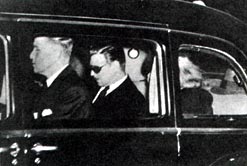 A devastated Clark headed back to Los Angeles with the bodies of his wife, his mother-in-law and his friend. He bought three crypts at Forest Lawn in Glendale in the Grand Mausoleum, Sanctuary of Trust: one for Bessie, one for Carole and one for himself. A small funeral was held for Carole and her mother on January 21. Clark sat in the front pew and spoke to no one. Carole had requested in her will that she be buried in a white dress by fashion designer Irene. The dress was laid on top of what was left of her body in the coffin.
A devastated Clark headed back to Los Angeles with the bodies of his wife, his mother-in-law and his friend. He bought three crypts at Forest Lawn in Glendale in the Grand Mausoleum, Sanctuary of Trust: one for Bessie, one for Carole and one for himself. A small funeral was held for Carole and her mother on January 21. Clark sat in the front pew and spoke to no one. Carole had requested in her will that she be buried in a white dress by fashion designer Irene. The dress was laid on top of what was left of her body in the coffin.
After the funeral, Clark returned home to their beloved ranch for the first time since Carole’s death. Jean Garceau gave Clark the last note from the ones Carole had left for him. She didn’t know what the note said, but upon reading it, Clark broke down and sobbed. Jean recalled, “Up until then, Clark had borne himself with fortitude and courage, had been stronger than any of us throughout the entire ordeal. After he calmed down, he was again in perfect control, his grief masked. He asked no sympathy, wanted none, was unapproachable.”
Elaine Barrymore (wife of John) perhaps said it best, “Clark adored her. She was the light in his eyes. He admitted to me that he had always loved the company of ladies and he knew he had a reputation of being a ladies man, but with her it was different. He really was in love. To have her taken from him was like someone ripped out his soul. I saw him periodically for years afterward. The light in his eyes was gone. Even when he smiled. That light never returned.”
From The Birmingham News, Birmingham, Alabama, January 19, 1942:
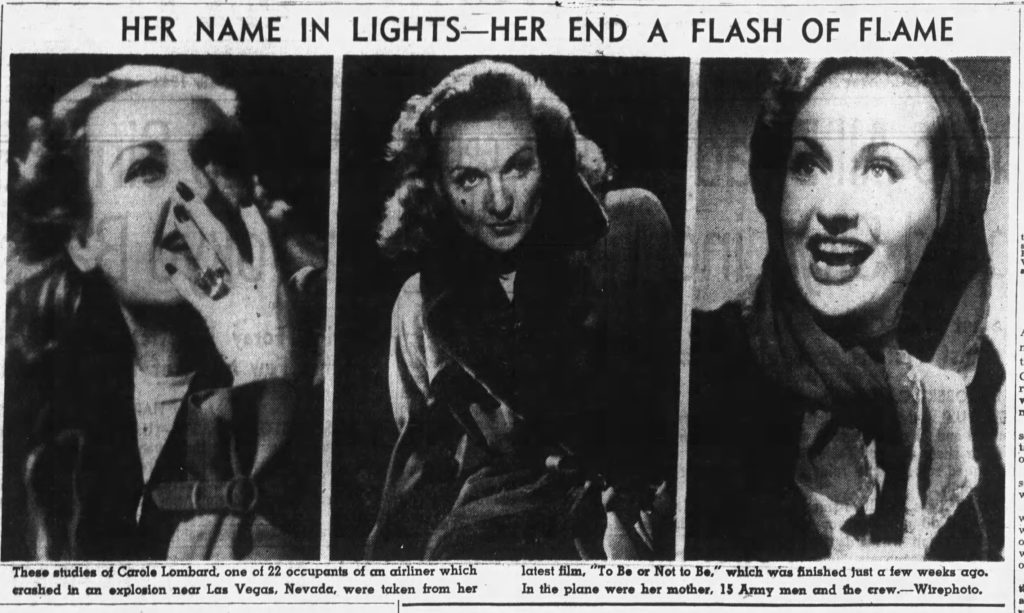
Carole Lombard’s Death Removes Robust Spirit
She came long way to climb peaks of fame, nothing artificial about her
by Vincent Townsend
Hollywood has lost one its most robust spirits–Carole Lombard.
She died as she would have wished…in the service of her country.
Saturday night they found her body on a rugged mountainside 40 miles along the air route from Las Vegas, Nev. to Los Angeles.
Not so many hours before she had sold millions of dollars in defense savings bonds at Indianapolis for the “battle of democracy.”
A flip of a coin sent her to her death.
With her mother and a Metro-Goldwyn-Mayer press agent, Otto Winkler, she flipped to see whether hey went by train, as Winkler urged, or by plane, the way she liked to travel.
Just a few minutes out of Las Vegas, almost in sight of home, there was a crash, an explosion and death.
The girl who had scaled the rocky peaks of moviedom to win a star’s place had come a long way.
Born Jane Peters in Fort Wayne, Ind., Carole Lombard fought her way from Sennett Comedies to the very top and stayed there.
First in comedy, then in heavy drama, but most successfully in comedy, she had won a place on the nation’s marquees.
When she was invited to come to Indianapolis to aid in United States bond sales she had to get the permission of her husband, Clark Gable, twice. In addition to exercising domestic prerogatives, it happened that Gable was the chairman of the Hollywood Victory Committee and as such had to approve the appearance of a star on an out-of-town defense program.
Friday night and all day Saturday as searching parties hunted the lost luxury airline Gable, hollowed-eyed, haggard and hoping against hope for a miracle, paced a hotel room floor first, and then followed in behind the searching parties.
The Lombard-Gable romance was one of Hollywood’s most successful.
The colorful, dyed-in-wool Lombard, who had seen Hollywood rise from its gaudy tinsel to the great amusement enterprise that it is, had made a success of her marriage to the screen’s No. 1 male star.
Good pals in the real sense of the word and not the Hollywood publicity gibberish, the hunted together, ranched together, had their own careers and out over their lives together.
There was a gentleman who called in late Saturday to ask this office why Saturday afternoon’s news carried a top banner line on Lombard and neglected a top play on new ship contracts for Mobile, a far more important story, he said.
But not many minutes before he had hung up the phone and gone his way a lady from Pell City came by to find a clipping in an old paper.
“Was Carole Lombard really killed?” she asked.
And when she was told there was no hope, she said “that’s terrible.”
We might point out to the gentleman who called in his friendly spirit of criticism that the top story of the day was the arrival of a little jolly, yet grim and rotund gentleman by the name of Winston Churchill at Plymouth, England. Had Mr. Churchill not arrived safely by plane the course of the whole world might have been changed.
Then, too, there was the arrival in Malaya of additional air strength, possibly enough to stop the Jap drive on Singapore.
There were many stories of more world shaking significance than the death of a girl named Jane Peters on the side of a Nevada mountain.
But you won’t be able to convince the Carole Lombard fans that there was any news more tragic or important Saturday than that their favorite screen star was dead.
Carole Lombard had brought Hollywood to a standstill. She understood the town and its crazy people. She was slender, fragile looking but she was a bright steel blade when necessary to puncture Hollywood balloons.
Her latest picture is “To Be Or Not To Be” in which she stars with Jack Benny. In it she pays Ophelia.
The picture business will miss Carole Lombard and her fans will miss her too. But most of all her country will miss her for she was a robust spirit…ready to give her best in a good cause.
It seems strange that she has been gone eighty years. You look at pictures of her and all she needs is an iPhone and she looks like she’d fit right in today. Carole’s intoxicating lust for life is timeless.


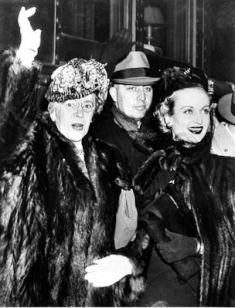
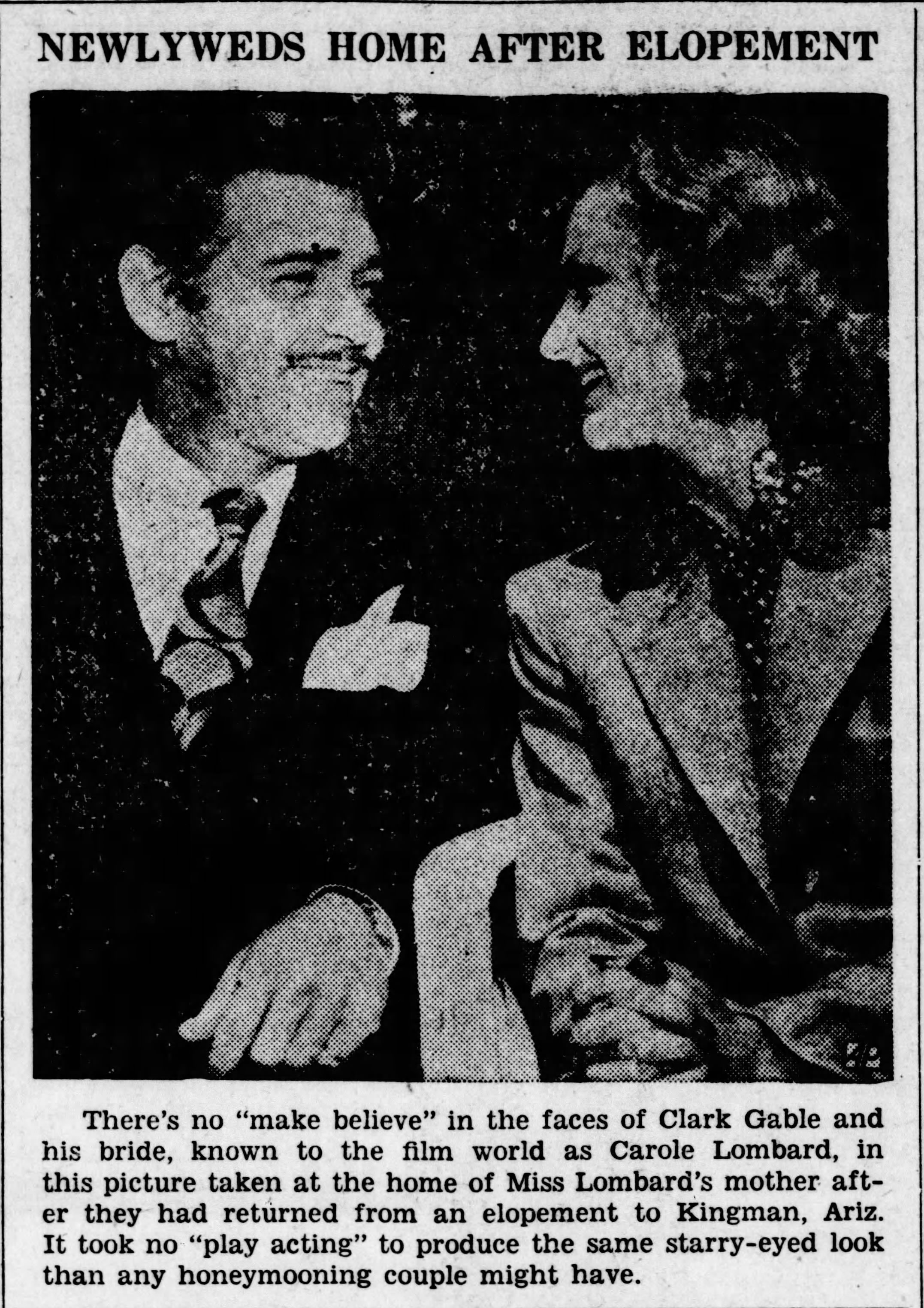

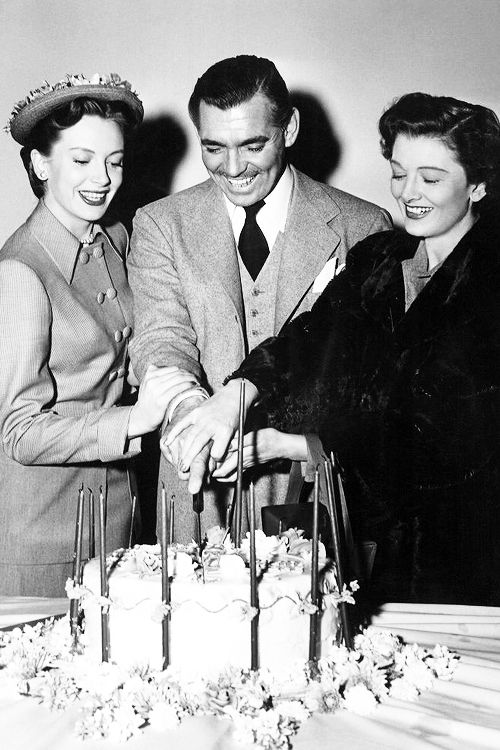
2 Comments
Dan
Well said at the end and wonderful tribute pieces you have included here. Thank you. I feel foolish that I am in tears given this happened 80 years ago and I never met this woman, but there is something about her and this tragic story that has always haunted and fascinated me
CocoB
Carole’s death of course has always been coupled with Gable and his supposed ladies and the alleged argument and her rushing to get home to him. And that is truly sad, but Carole was also the first female casualty of WWII. The first woman in America to die in service during WWII.
If only she knew how much she was truly loved.
Rest In Peace, Carole.
And yes, she is as perfectly styled today as in the 30’s.